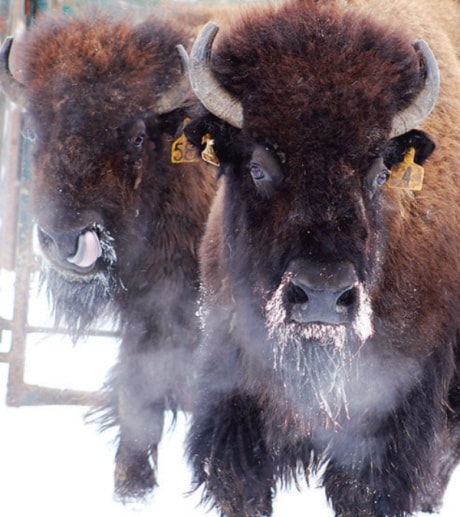Officials are reminding ºÚÁϳԹÏÍøers about anthrax safety after a dead bison was discovered on the west shoulder of Highway 3, at kilometre 164, is suspected to have died of the disease.
"Laboratory results are currently pending," the GNWT stated on Aug. 15. "However, given a preliminary investigation in the field, this is being treated as a suspected anthrax case and an Incident Management Team has been mobilized.
"Anthrax is a naturally-occurring disease in wildlife that can be dangerous to people and animals. Proper disposal of suspected cases is essential to protect public health, bison populations and the environment."
Part of the response includes aerial and ground surveys for more carcasses to determine whether the infection had spread.
Carcasses and surrounding vegetation are either chemically treated or burned. Special wildfire precautions are taken to ensure any spores are not spread by the flames.
"Primary objectives include rapid detection and disposal of dead, infected bison and keeping people away from the area," said the GNWT. "This minimizes the release of anthrax spores into the soil, protects bison populations and protects public health and safety.
Anthrax is a bacterial and potentially fatal infection caused by inhaling or consuming anthrax spores. Bison usually catch it by walking through dust storms. It can be caught by other animals, including humans. Human infection usually occurs from eating contaminated meat, inhaling spores or having contact with them, particularly through open wounds.
Symptoms in humans can vary depending on where the infection takes hold. On the skin, it can form painful ulcers that can swell lymph nodes. In the intestine, symptoms start with nausea, loss of appetite, vomiting and fever. Left unchecked, the infection can develop into abdominal pain, vomiting of blood and severe diarrhea.
Lung infections can be fatal. Symptoms start out resembling the flu, and then disappear for a few days before returning with further symptoms, including difficulty breathing and shock.
Anyone who thinks they may have been exposed to anthrax is advised to speak to a doctor as it can be treated with antibiotics and vaccinations before symptoms are present. People are advised to avoid hunting, approaching or eating bison in the Slave River lowlands. Soil where bison have been spotted should also be avoided and left undisturbed.
If you see a dead bison, the Department of Environment and Climate Change requests you report the carcass immediately to avoid the spread of the disease. Phone 1-867-872-6438 to report a deceased bison.

.png;w=120;h=80;mode=crop)
.png;w=120;h=80;mode=crop)
.png;w=120;h=80;mode=crop)